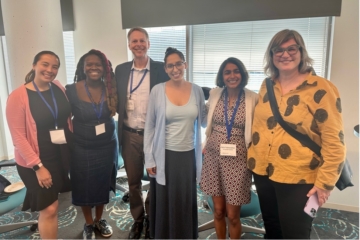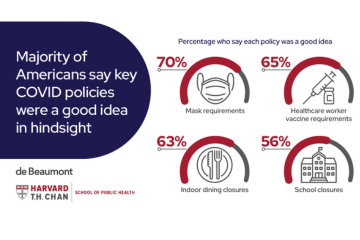
Register at no charge for a webinar on April 3 at 1:00 pm ET.
“As we are seeing real-time with the coronavirus outbreak, public health professionals in state and local government play a critical role in protecting and improving the lives of residents,” said Joshua Franzel, PhD, report author and SLGE president and chief executive officer. “This sector, and the state and local government workforce overall, is rapidly changing and continues to face a range of employee recruitment and retention challenges.
“The report is offered to describe the underlying composition of the public health labor force and how it relates to the structure of the state and local government workforce more broadly,” he said. “This information is essential as health departments and other components of the public sector identify and implement strategies to develop their future workforces.”
Brian Castrucci, DrPH, president and CEO of the de Beaumont Foundation, which commissioned the report, said, “These data is an important supplement to our Public Health Workforce Interests and Needs Survey (PH WINS). That survey provides insight about the demographics and attitudes of public health employees, and this new report offers a context for that information. It is the first analysis of its type to illustrate how the needs and challenges of state and local government public health agencies compare with those in other areas of government.”
Among the key findings:
- In terms of workforce size, there were 19,544,000 state and local government employees as of May 2017; 1,227,330 (6.3 percent of the overall state and local workforce) work in healthcare practitioner and technical or healthcare support occupations. More specifically, 244,230 (1.2 percent) work in direct public health roles.
- Regarding gender, the overall state and local workforce is 60 percent female, while the public health workforce has a greater proportion of females at 77 percent.
- In 2017, the public health workforce was more diverse in terms of race and ethnicity than the overall state and local government workforce. Non-white cohorts – such as Blacks, Asians, and Latinos – make up larger portions of the public health workforce, relative to the overall state and local public sector workforce.
- The age distributions of the public health workforce and overall state and local government workforce tend to follow the same general pattern. More than two-thirds of workers for the public health and overall government workforce are in the 36-to-65 age bracket. But the public health workforce skews somewhat older than the overall public sector workforce.
- Given the knowledge-based roles of most state and local government workers, a sizable majority – 81 percent for the public health workforce and 67 percent for the overall state and local government workforce – has completed some type of post-secondary education.
- The annual salary distribution of both the public health and overall state and local government workforce follows similar patterns, with there being fewer public health professionals in the lowest salary range.
- Members of the public health workforce typically have a longer tenure than the state and local workforce overall. In 2017, the median length of time public health employees stayed with their respective employers was eight years, while the state and local government workforce overall had a median of 6.7 years.
In partnership with the de Beaumont Foundation, SLGE will continue to explore ways that public health agencies and local governments are partnering to address today’s greatest public health challenges. A forthcoming report will share survey results and case studies of how jurisdictions are collaborating across sectors to achieve their missions, leverage expertise, reduce duplication of efforts, and attract knowledge workers with essential skill sets.




